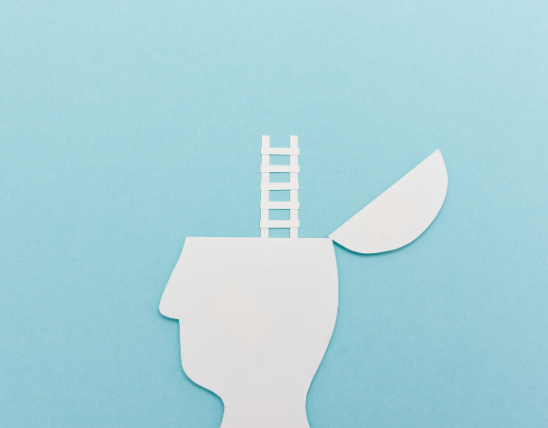Let’s start with the metaphor that your brain is like hardware, while your mind is the software that runs on that hardware. Thanks to evolution, your brain has some serious limitations, but upgrading the software (your mindset) actually improves how your brain works. Thanks to major advances in neuroscience, we now know that our brains are much more pliable than we once imagined (a phenomenon called neuroplasticity). With some work, we can rewire our brains to build a better mindset. It’s good to think of the brain as an object that is malleable—if we do the work.
It’s a well-researched fact that the brain is wired for negative thinking and risk reduction. Negative bias is one of the leftovers from the days when we were hunter/gatherers, and there was always some bigger creature around the corner waiting to devour us. At work, this relic from the past is experienced as “negative bias” and has us imagining that a harsh email puts our mortal life in danger. I once worked for a boss where, every time I saw his name on my caller id, I’d go into panic. I’d let the call to go to voicemail and, once I retrieved it, I’d discover it was benign. This process was negative bias in action.
In their Nobel prize–winning research, Kahneman and Tversky found that when making decisions, people consistently place greater weight on negative aspects of an event than they do on positive portions. As a result, we often make sub-optimal choices and avoid taking the most effective action. I’ve learned a lot about managing such a negativity bias. I’m hoping that you find some useful tips here.
1. Learn to Reframe
Over the course of my career, I’ve had a lot of managers. I was terribly sensitive to their criticism and eager to please. So, when I’d see an email or listen to a voicemail stating, “Let’s talk,” I’d immediately go into panic mode: “I must have made a mistake…. Today is the day I’m going to be fired…. I’m in trouble….”
I learned to reframe this by telling myself, “X likes you/your work. I bet this is going to be helpful or even positive news.” To this day, I am still working this program.
2. Do “The Work”
Some of us have programming from our youth that fast–tracks from negative bias to catastrophic thinking. We see dire consequences happening in routine situations. Many years ago, I learned about Byron Katie’s four-question method of looking at our thinking that really helps correct any catastrophizing. “The work” involves questioning a thought you have in four steps:
Question 1: Is it true? (Is the thought true).
Question 2: Can you absolutely know it’s true?
Question 3: How do you react when you have that thought? (What happens when you believe that thought?).
Question 4: Who would you be without the thought?
Now turn the thought around by re-framing it.
This is a great cognitive process to use when we think really bad things are going to happen. My beloved dog Bella has to have some routine surgery this week. I have had to interrogate my thinking so as to not catastrophize the event.
3. Get Grateful
It seems trite to suggest that gratitude can help, but gratitude is the perfect antidote to negative thinking. Start a gratitude practice: When you get ready for bed at night, remember all the good things that happened that day. If you journal, add a practice of listing five things you are grateful for (trust me, this can be hard).
4. Turn Off the News
It’s hard to believe that the iPhone was launched 13 years ago. Suddenly, we had the capability to have bad news immediately in our hands! Any time you need bad news, you can easily go to your phone. In fact, you can have bad news pushed to you via alerts. We now have the capacity to live a triggered life, all held in one little device that fits in your hand. Hyperbole aside, give yourself a “news fast.” Reading bad news is not going to change the bad news; it’s simply going to amplify the threats you feel. So, take a break. I rarely look at the news first thing in the morning. Give yourself at least two hours in the morning before you look at your phone (unless you are a late riser; then this becomes a little more challenging).
5. Give Yourself a Dopamine Shot
This is something I learned years ago (before I really knew the science). When I have a challenging situation, I think of my dog Bella curled up on my lap. It immediately lightens me and sends some needed dopamine into my system. You can do this with music (I love the Chillout Lounge Mix) or imagine being in a favorite place (the beach, the mountains). We humans are the only mammals who can imagine a calm or stressful situation and have a physical, hormonal response as if we are really having that experience. Use your superpower—your mind—to de-escalate a challenging situation.
There are a lot more things you might do, but, for now, commit to practicing one of these five tips to build a better mind in 2020.
